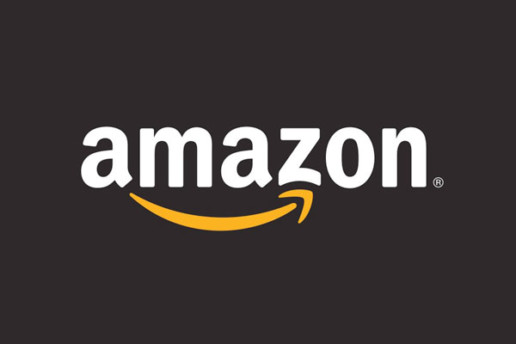A Check Up on U.S. Global Health Policy, After One Year of the Trump Administration
From Kaiser Family Foundation, let's take a look at this informative article that reviews healthcare since the beginning of the Trump Presidency.
This month marks one year since Donald Trump became the 45th President of the United States after winning the election on a populist, “America-First”, platform. Since then, there have been many questions raised about what a Trump Presidency would mean for U.S. global health policy in light of statements on scaling back foreign aid and a skepticism of the value of multilateral institutions and key international agreements. Historically, global health has enjoyed bipartisan support and been highlighted as a major area of success for the United States. Funding for global health rose significantly in the last decade and, although it has leveled off, it still represents the largest component of U.S. foreign assistance (an estimated 24% in FY 2017).
In this brief, we take stock of the U.S. global health response on the occasion of one year of the Trump Presidency and look ahead to the global health policy issues that are likely to be front and center in the coming months and years. Overall, there are a mix of challenges facing the U.S. global health response, some of which pre-dated Trump and others that are the result of decisions and actions of the administration, including proposals to significantly scale back funding. At the same time, global health programs still enjoy strong bipartisan support in Congress and, according to our just-released poll, about half of the public still wants the U.S. to play a major or leading role in improving health in developing countries (see Figure 1 and Appendix).

Figure 1: Half of the Public Sees Leading or Major Role for the U.S. in Improving Health in Developing Countries
DIAGNOSIS
ADMINISTRATION ACTIONS HAVE LED TO FOREIGN POLICY UPHEAVAL
In keeping with the “America First” campaign and promises to re-examine the U.S. role in world affairs, the Trump Administration has made a number of notable changes in broader U.S. foreign policy that affect global health. These include the administration’s decision to withdraw from the Paris Climate Accord, its criticism of and new demands for U.S. engagement in the context of international trade agreements such as the Trans-Pacific Partnership (TPP) and North American Free Trade Agreement (NAFTA), and skepticism of, and intent to reduce U.S. support for the United Nations and potentially other multilateral organizations. More recently, the administration has proposed to cut foreign aid to countries that voted counter to U.S. government wishes at the UN. While this threat is not without precedent, it is a departure from U.S. policy over the prior two decades, and underscores the administration’s theme of emphasizing U.S. interests over other considerations.
The Trump Administration has also sought to make its mark on the agencies that carry out U.S. foreign policy, including the State Department and the U.S. Agency for International Development (USAID). Following a March 2017 White House Executive Order on reorganizing the executive branch, Secretary of State Rex Tillerson has attempted to re-organize and reform these agencies. One potential move that was feared by many was the idea of “merging” USAID and the State Department – the two currently exist as quasi-independent – but to date there is no evidence of such a change being actively pursued. At the same time, budget requests from the White House have demonstrated the administration’s desire to make significant cuts to these agencies’ budgets, and their day-to-day management has been criticized by current and former employees. In addition, there has been decidedly slow progress in nominating and appointing staff for key foreign policy leadership posts, along with a notable exodus of experienced staff over the last year. For example, as of this writing, President Trump had nominated far fewer candidates at the State Department (89) compared to Presidents Obama (137) and George W Bush (153) at the same point in their first terms.
And, whereas human rights has been a component of U.S. foreign policy that the Obama Administration sought to elevate in its foreign policy (even including it prominently in its national security strategy), Trump Administration officials have downplayed the importance of human rights, leading to worries in the foreign policy and development community, and letters of concern from members of Congress.
IMPLICATIONS FOR GLOBAL HEALTH
A lack of ambassadors in some countries, needed staff appointments in some positions, a shifting stance on human rights, and a shrinking foreign policy workforce have concerning implications for planning and carrying out U.S. global health programs. Such difficulties for global health have been compounded by certain policy decisions, including proposals to significantly cut U.S. global health funding (see Figure 2).

Figure 2: U.S. Global Health Funding, FY 2004-FY 2018 Request
The most concrete global health policy change of the administration to date came on the first Monday of President Trump’s term, in the form of a re-instatement and expansion of the Mexico City Policy. The Policy, which was in effect and applied to family planning assistance in previous Republican administrations, was not only re-instated but also expanded to encompass almost all global health assistance, increasing the number of organizations and the amount of funding affected by the policy. We found the expanded policy applies to more than $7 billion in funding and likely affects more than one thousand foreign NGOs. In addition, on March 30 the administration invoked the “Kemp-Kasten amendment” to withhold funding for the United Nations Population Fund (UNFPA), the lead U.N. agency focused on global population and reproductive health, as has been done in previous Republican administrations.
The administration’s request to significantly cut global health funding is unprecedented. For FY2018 the White House proposed cuts of over $2B to global health, representing a 23% overall reduction compared to FY2017; these included a proposed reduction to PEPFAR of more than $1 billion and a zeroing out of the family planning budget, among others. Multiple analyses of the potential impacts of such cuts conclude that serious negative health consequences would result, including many more infections and deaths from HIV and TB, and an increase in the number of abortions along with greater maternal mortality. None of these requested cuts have been enacted but this is the first time cuts of this magnitude have been proposed, and they mark a significant shift from the direction and emphasis of prior administrations.
Even as they have implemented more restrictive policies and proposed cuts, Trump Administration officials have publicly stated support for select U.S. global health priorities. In his first major speech to the United Nations in September, for example, President Trump highlighted three major U.S. global health areas of success: PEPFAR, the President’s Malaria Initiative, and the Global Health Security Agenda (GHSA). Secretary of State Tillerson has also spoken about the importance of PEPFAR and the GHSA; the U.S. has signaled its intention to remain engaged in the larger GHSA effort, and has even highlighted the importance of global health security in the newly revised U.S. National Security Strategy, and is expected to do the same in a forthcoming national biodefense strategy. Despite the foreign policy vacancies noted above, some global health and development leaders have remained in their roles since the Obama Administration, including the U.S. Global AIDS Coordinator and the Director of the National Institutes of Health, while other key positions have been filled by President Trump, including the new USAID Administrator who has a strong record in global health, the Director of the Centers for Disease Control and Prevention, and leadership on global health within the White House National Security Council.
CONGRESS PUSHES BACK
Congress has also continued to play a significant role in global health, including bipartisan and bicameral push back against proposed funding cuts. Funding for global health was kept at FY 2017 levels and, while not yet final, will likely be level in FY2018 as well. Moreover, Congress has asserted its role in directing global health efforts by including, for the first time, language in the FY 2017 budget legislation that prevents the administration from changing global health program funding levels. Congress also included language requiring a report before any reorganization of State and USAID could occur. Many stakeholders, including current and former U.S officials, the faith community, and members of the military, have also pushed back on the administration’s proposed cuts to global health and development.
U.S. PUBLIC SUPPORT FOR GLOBAL HEALTH CONTINUES, THOUGH WITH SOME DECLINES & PARTISAN DIVISIONS
Our latest (January 2018) tracking poll assessed public support for U.S. engagement in global health in the Trump era. The public perceives the Trump Administration as less supportive of global health, with half (53%) saying the Trump Administration has made global health a lower priority than previous administrations.
As mentioned above, about half of the public (54%) say they want the U.S. to play a leading or major role in improving health for people in developing countries. Support for such engagement is strongest among Democrats (73%), who also are more likely to support the U.S. playing “a leading role” (20%), and lower among independents (47%) and Republicans (49%), see Figure 3; Trump supporters are not interested in the U.S. playing a leading role (just 4% say they believe this). However, overall support fell slightly from 2016, when 61% said they think the U.S. should take a leading or major role.

Figure 3: Support for U.S. Role in Improving Health in Developing Countries by Party Identification
Most of the public (59%) believe the U.S. is spending the right amount or not enough on global health programs, but one-third (33%) believe the U.S. is spending too much – a significant jump from the 18% saying we were spending too much in 2016.
For overall global engagement, the poll numbers indicate a greater proportion of the U.S. public (69%) now believes the U.S. should take at least a major role in solving the world’s problems than in 2016 (57%). The share of Republicans agreeing with this statement grew from 20% in 2016 to 31% in 2018. However, confusion about the amount spent on U.S. foreign aid persists, with half (49%) saying too much is spent in this area but when presented with the actual amount – about 1% of the federal budget goes to foreign aid – people are much less likely (29%) to view that as too much spending (as found in previous polls). See Appendix and poll results for more detailed information.
PROGNOSIS
The push and pull in global health policy will likely continue in 2018 and potentially intensify. On the one hand, actions taken by the administration signal a reduced U.S. engagement in the world and intention to step back further in global health. On the other, U.S. global health programs have so far demonstrated resilience, buoyed by strong support from Congress and key stakeholders.
The tension will likely be tested again in the near term with the soon-to-be released FY 19 White House budget request, which many expect to propose at least the same level of deep cuts to global health. Negotiations will take place within the broader context of greater budget pressures and concerns about the deficit, particularly in wake of recently enacted tax legislation that could tighten discretionary spending, including for foreign assistance, even more.
Beyond that, there will be a number of other issues to watch, including:
- Mexico City Policy: The expanded Mexico City Policy, which has only begun to be implemented, will likely be felt in a much more pronounced way in these next months and years including potential gaps in services in the field;
- PEPFAR: The administration, Congress, and other stakeholders are beginning to assess whether they want to move forward to reauthorize PEPFAR – the program’s current authorization expires at the end of FY 2018 (though the program will not end and a new reauthorization is not needed to keep it funded). In addition, PEPFAR’s recently launched new strategy, which aims to focus most efforts on 13 priority countries, raises questions about the larger U.S. global AIDS response in the context of potential budget decreases;
- Global Health Security Agenda: Key decisions about the next phase of the GHSA, including what to do regarding an impending fiscal cliff as supplemental Ebola funds expire in FY2019, will soon be coming down the pike and the U.S., as a founding and leading member of the partnership, will figure prominently in its future direction; and
- Replenishment: Two major global health multilateral partners of the U.S. – the Global Fund and GAVI – will soon begin processes for launching their next replenishment conferences, marking an important moment for gauging future U.S. support.
The key question going forward, then, may very well be which vision of global health will end up holding sway in the political back-and-forth in Washington – that of the White House or Congress? Ultimately, the winners, or losers, of this “battle” will be the people that benefit from U.S. investments around the world.
Source: Kates J., Michaud J., Kirzinger A., Munana C. (29 January 2018). "A Check Up on U.S. Global Health Policy, After One Year of the Trump Administration" [Web Blog Post]. Retrieved from address https://www.kff.org/global-health-policy/issue-brief/a-check-up-on-u-s-global-health-policy-after-one-year-of-the-trump-administration/
Algorithmic Bias – What is the Role of HR?
How should HR professionals deal with the forthcoming algorithmic bias issue? Find out in this article.
Merriam-Webster defines ‘algorithm’ as step-by-step procedure for solving a problem…In an analog world, ask anyone to jot down a step-by-step procedure to solve a problem – and it will be subject to bias, perspective, tacit knowledge, and a diverse viewpoint. Computer algorithms, coded by humans, will obviously contain similar biases.
The challenge before us is that with Moore’s Law, cloud computing, big data, and machine learning, these algorithms are evolving, increasing in complexity, and these algorithmic biases are more difficult to detect – “the idea that artificially intelligent software…often turns out to perpetuate social bias.”
“Algorithmic bias is shaping up to be a major societal issue at a critical moment in the evolution of machine learning and AI. If the bias lurking inside the algorithms that make ever-more-important decisions goes unrecognized and unchecked, it could have serious negative consequences, especially for poorer communities and minorities.”What is the role of HR in reviewing these rules? What is the role of HR in reviewing algorithms and code? What questions to ask?
In December 2017, New York City passed a bill to address algorithmic discrimination.Some interesting text of the bill, “a procedure for addressing instances in which a person is harmed by an agency automated decision system if any such system is found to disproportionately impact persons;” and “making information publicly available that, for each agency automated decision system, will allow the public to meaningfully assess how such system functions and is used by the city, including making technical information about such system publicly available where appropriate;”
Big data, AI, and machine learning will put a new forward thinking ethical burden on the creators of this technology, and on the HR professionals that support them. Other examples include Google Photos incorrect labeling or Nikon’s facial detection. While none of these are intentional or malicious, they can be offensive, and the ethical standards need to be vetted and reviewed. This is a new area for HR professionals, and it’s not easy.
As Nicholas Diakopoulos suggests, “We’re now operating in a world where automated algorithms make impactful decisions that can and do amplify the power of business and government. As algorithms come to regulate society and perhaps even implement law directly, we should proceed with caution and think carefully about how we choose to regulate them back.”
The ethical landscape for HR professionals is changing rapidly.
Read more.
Source: Smith R. (15 February 2018). "Algorithmic Bias – What is the Role of HR?" [Web Blog Post]. Retrieved from address https://blog.shrm.org/blog/algorithmic-bias-what-is-the-role-of-hr
A New Approach to Paid Leave: WorkFlex in the 21st Century Act
From SHRM, let's take a look a this innovative approach toward paid leave using WorkFlex.
Do you ever sit in your office and wonder about everyone else? Ponder whether anyone is dealing with the same things that you are in that very moment? The simple fact is that everyone independent of age, gender, race or title, wants to be there to support their family. For myself, that means advocating for clients, while caring for my mother and doing all that I can for my wife and two boys. It is quite a balancing act on the best of days. To be fair, I know that I am not alone in this balancing act. As I write this I am wondering if you know exactly what I mean. Perhaps not for yourself, but a colleague or a friend.
Now since we generally live, work or both in New Jersey and in particular within the Delaware Valley there are some things that impact our ability to balance. For example, if you work for an organization that has offices in Philadelphia, PA; Wilmington, DE; Trenton, NJ; Montclair, NJ and Haddonfield, NJ exactly how do you provide equal paid leave to employees? Why should you care? Because these specific locations differ in how they require paid leave to be provided to employees. Are you concerned about this? You are not alone, clients regularly ask what to do as it relates to dealing with paid leave. Often this is more challenging for us than in most places around the country due to the varying ways that towns as opposed to States or the Commonwealth deal with this issue.
Some time ago I was asked to assist SHRM with the creation of federal legislation to address the issue of varying applications of paid leave laws around the country. After a significant amount of discussions, revisions and hard work by a host of individuals we came up with a legitimate proposal to address our respective concerns. Recently the “Workflex in the 21st Century Act” (HR 4219) was introduced in the House by Representative Mimi Walters. This bill is designed to support the goals of everyone, not just employers or employees. You can read more about the specifics at: https://www.advocacy.shrm.org/workflex.
For now, allow me to give you three specific reasons (although there are more) that both you and your organization should support this legislation:
First, unlike federal mandates under the FMLA, FLSA, or ADA, this legislation is OPT-IN, which means as an employer in order for your organization to be held responsible under the bill it would have to decide to agree to it first. Put another way, an employer is not required to do it if it chooses to go in another direction.
Second, many federal employment laws bring with them a threshold beyond which every employer is held to the same standard, however that is not the case with the “Workflex in the 21st Century Act.” It is designed to grow with your organization. As a result the benefit thresholds change based on the number of employees in an organization, so that it supports growth rather than stifling expansion.
Third, contrary to the way things are currently going in our region, this bill provides a level of certainty and flexibility for both employers and employees alike to know the threshold of their leave benefits, which will result in more productive employees and organizations. Part of the reason for this certainty is that the various local leave laws would be preempted by this bill.
What does all this mean? I would suggest that this bill is a good compromise of interests across the spectrum of both employers and employees, as well as unions, who want to do the right thing. Allow for realistic time to care for a child, parent or for yourself. No one needs to change jobs to get a specific type of benefit and employers can choose if it makes sense for their workplace, rather than being dictated to in terms of the benefits to provide their employees.
Now I would like to challenge you to join me. This is the first piece of legislation that SHRM has created for the workplace and as you can see the goal is to address concerns that all workers have, independent of title, so we can all have the balance that we need and want in order to be better contributors in our respective organizations, supportive of our parents, children and ourselves. How can we achieve this together? We can all reach out to our federal legislators and let them know that you support the “Workflex in the 21st Century Act” (HR 4219). You can find more information on https://www.advocacy.shrm.org/workflex or on the SHRM Advocacy App. Let’s take this opportunity to make the workplace better for everyone, together.
Read more.
Source: Lessig L. (February 8th, 2018). "A New Approach to Paid Leave: WorkFlex in the 21st Century Act" [Web Blog Post]. Retrieved from address https://www.advocacy.shrm.org/shrm/app/document/26467137
Algorithmic Bias – What is the Role of HR?
How should HR professionals deal with the forthcoming algorithmic bias issue? Find out in this article.
Merriam-Webster defines ‘algorithm’ as step-by-step procedure for solving a problem…In an analog world, ask anyone to jot down a step-by-step procedure to solve a problem – and it will be subject to bias, perspective, tacit knowledge, and a diverse viewpoint. Computer algorithms, coded by humans, will obviously contain similar biases.
The challenge before us is that with Moore’s Law, cloud computing, big data, and machine learning, these algorithms are evolving, increasing in complexity, and these algorithmic biases are more difficult to detect – “the idea that artificially intelligent software…often turns out to perpetuate social bias.”
“Algorithmic bias is shaping up to be a major societal issue at a critical moment in the evolution of machine learning and AI. If the bias lurking inside the algorithms that make ever-more-important decisions goes unrecognized and unchecked, it could have serious negative consequences, especially for poorer communities and minorities.”What is the role of HR in reviewing these rules? What is the role of HR in reviewing algorithms and code? What questions to ask?
In December 2017, New York City passed a bill to address algorithmic discrimination.Some interesting text of the bill, “a procedure for addressing instances in which a person is harmed by an agency automated decision system if any such system is found to disproportionately impact persons;” and “making information publicly available that, for each agency automated decision system, will allow the public to meaningfully assess how such system functions and is used by the city, including making technical information about such system publicly available where appropriate;”
Big data, AI, and machine learning will put a new forward thinking ethical burden on the creators of this technology, and on the HR professionals that support them. Other examples include Google Photos incorrect labeling or Nikon’s facial detection. While none of these are intentional or malicious, they can be offensive, and the ethical standards need to be vetted and reviewed. This is a new area for HR professionals, and it’s not easy.
As Nicholas Diakopoulos suggests, “We’re now operating in a world where automated algorithms make impactful decisions that can and do amplify the power of business and government. As algorithms come to regulate society and perhaps even implement law directly, we should proceed with caution and think carefully about how we choose to regulate them back.”
The ethical landscape for HR professionals is changing rapidly.
Read more.
Source: Smith R. (15 February 2018). "Algorithmic Bias – What is the Role of HR?" [Web Blog Post]. Retrieved from address https://blog.shrm.org/blog/algorithmic-bias-what-is-the-role-of-hr
A New Approach to Paid Leave: WorkFlex in the 21st Century Act
From SHRM, let's take a look a this innovative approach toward paid leave using WorkFlex.
Do you ever sit in your office and wonder about everyone else? Ponder whether anyone is dealing with the same things that you are in that very moment? The simple fact is that everyone independent of age, gender, race or title, wants to be there to support their family. For myself, that means advocating for clients, while caring for my mother and doing all that I can for my wife and two boys. It is quite a balancing act on the best of days. To be fair, I know that I am not alone in this balancing act. As I write this I am wondering if you know exactly what I mean. Perhaps not for yourself, but a colleague or a friend.
Now since we generally live, work or both in New Jersey and in particular within the Delaware Valley there are some things that impact our ability to balance. For example, if you work for an organization that has offices in Philadelphia, PA; Wilmington, DE; Trenton, NJ; Montclair, NJ and Haddonfield, NJ exactly how do you provide equal paid leave to employees? Why should you care? Because these specific locations differ in how they require paid leave to be provided to employees. Are you concerned about this? You are not alone, clients regularly ask what to do as it relates to dealing with paid leave. Often this is more challenging for us than in most places around the country due to the varying ways that towns as opposed to States or the Commonwealth deal with this issue.
Some time ago I was asked to assist SHRM with the creation of federal legislation to address the issue of varying applications of paid leave laws around the country. After a significant amount of discussions, revisions and hard work by a host of individuals we came up with a legitimate proposal to address our respective concerns. Recently the “Workflex in the 21st Century Act” (HR 4219) was introduced in the House by Representative Mimi Walters. This bill is designed to support the goals of everyone, not just employers or employees. You can read more about the specifics at: https://www.advocacy.shrm.org/workflex.
For now, allow me to give you three specific reasons (although there are more) that both you and your organization should support this legislation:
First, unlike federal mandates under the FMLA, FLSA, or ADA, this legislation is OPT-IN, which means as an employer in order for your organization to be held responsible under the bill it would have to decide to agree to it first. Put another way, an employer is not required to do it if it chooses to go in another direction.
Second, many federal employment laws bring with them a threshold beyond which every employer is held to the same standard, however that is not the case with the “Workflex in the 21st Century Act.” It is designed to grow with your organization. As a result the benefit thresholds change based on the number of employees in an organization, so that it supports growth rather than stifling expansion.
Third, contrary to the way things are currently going in our region, this bill provides a level of certainty and flexibility for both employers and employees alike to know the threshold of their leave benefits, which will result in more productive employees and organizations. Part of the reason for this certainty is that the various local leave laws would be preempted by this bill.
What does all this mean? I would suggest that this bill is a good compromise of interests across the spectrum of both employers and employees, as well as unions, who want to do the right thing. Allow for realistic time to care for a child, parent or for yourself. No one needs to change jobs to get a specific type of benefit and employers can choose if it makes sense for their workplace, rather than being dictated to in terms of the benefits to provide their employees.
Now I would like to challenge you to join me. This is the first piece of legislation that SHRM has created for the workplace and as you can see the goal is to address concerns that all workers have, independent of title, so we can all have the balance that we need and want in order to be better contributors in our respective organizations, supportive of our parents, children and ourselves. How can we achieve this together? We can all reach out to our federal legislators and let them know that you support the “Workflex in the 21st Century Act” (HR 4219). You can find more information on https://www.advocacy.shrm.org/workflex or on the SHRM Advocacy App. Let’s take this opportunity to make the workplace better for everyone, together.
Read more.
Source: Lessig L. (February 8th, 2018). "A New Approach to Paid Leave: WorkFlex in the 21st Century Act" [Web Blog Post]. Retrieved from address https://www.advocacy.shrm.org/shrm/app/document/26467137
4 trends in financial education
Having financial wellness within your business is incredibly valuable for its overall growth and success. In this article, we are going to take a look at four trends contributing towards financial wellness in the employee benefits realm. Read more below.
Employees’ financial well-being is a hot topic these days. Right now, it’s top-of-mind with most employees. And it’s becoming more so with employers, not only because they are realizing the effect employee financial stress has on their bottom line, but also because industry surveys are revealing that employees want their employers to help by providing financial education and benefits.
Benefit advisers have a definite role in helping employers take steps toward building a more financially-secure workforce through financial wellness benefits. What should advisers expect to see this year in financial wellness benefits?
Industry research confirms the impact employee financial stress has on a company’s bottom line, including lower productivity, higher absenteeism and more healthcare claims. Only about half of employers offered some kind of counseling or instruction about money last year, according to SHRM and IFEBP surveys. Certainly, more employers will want to add financial education benefits this year. Benefit advisers can help by bringing this to the attention of their clients.
Another trend to consider is that financial education benefits are becoming more holistic. Financial education benefits should be more than planning for retirement and having access to supplemental medical benefits. Financial education benefits today should include financial education tools and resources as well as voluntary benefits that are designed to address both physical and emotional struggles while working to help employees with short-term financial needs.
Look for more student loan repayment benefits to become available in the industry this year. In 2017, more Americans were burdened by student loan debt than ever before. It’s a major concern among today’s millennials, the largest generation in today’s workforce. This year we likely will see more student loan repayment benefits appear, including programs in which employers are making contributions to loan balances or providing methods for employees to refinance their debt.
Increased attention to helping employees with short-term financial issues also will be a focus this year. In spite of the improved economy, employees are still struggling financially. Statistics show the alarming number of employees that continue to live paycheck-to-paycheck and do not have even $1,000 in savings for emergency needs.
While financial education benefits can help employees with budgeting and debt reduction needs, employers should offer additional voluntary benefits that provide employees some financial assistance in the short-term. Benefit advisers should bring short-term financial assistance voluntary benefits to the attention of their clients. Among these are employee purchase programs and low interest installment loans and credit that help employees avoid payday loans and cash advances from credit cards when they have emergency needs such as a broken refrigerator or unexpected out-of-pocket medical expenses.
Employers are realizing the important role that financial education plays in an employee’s overall well-being and will look to increase their financial wellness benefits on several levels. Benefit advisers not only can bring the need to the attention of their clients, but can also offer benefit recommendations to round out their clients’ employee benefits programs.
Read the original article.
Source: Halkos E. (February 9th, 2018). "4 trends in financial education" [Web Blog Post]. Retrieved from address https://www.employeebenefitadviser.com/opinion/4-trends-in-financial-education
How Are Health Centers Responding to the Funding Delay?
Unfortunately, the funding delay is impacting healthcare centers everywhere - and not in a great way. Get the information you need to know in this article.
Health centers play an important role in our health care system, providing comprehensive primary care services as well as dental, mental health, and addiction treatment services to over 25 million patients in medically underserved rural and urban areas throughout the country. Health care anchors in their communities and on the front lines of health care crises, including the opioid epidemic and the current flu outbreak, health centers rely on federal grant funds to support the care they provide, particularly to patients who lack insurance coverage. However, the Community Health Center Fund (CHCF), a key source of funding for community health centers, expired on September 30, 2017, and has since been extended through only March 31, 2018. The CHCF provides 70% of grant funding to health centers. With these funds at risk, health centers have taken or are considering taking a number of actions that will affect their capacity to provide care to their patients. This fact sheet presents preliminary findings on how health centers are responding to the funding uncertainty.
WHAT FUNDING IS AT STAKE FOR HEALTH CENTERS
The Community Health Center Fund represents 70% of federal grant funding for health centers. Established by the Affordable Care Act, the CHCF increased federal grant fund support for health centers, growing from $1 billion in 2011 to $3.6 billion in 2017.1Authorized for five years beginning in 2010, and extended for two years through September 2017, the CHCF also provided a more stable source of grant funding for health centers that was separate from the annual appropriations process. Prior to the CHCF, federal 330 grant funds were appropriated annually. In fiscal year 2017, federal section 330 grant funding totaled $5.1 billion, $3.6 billion from the CHCF and $1.5 billion from the annual appropriation.
Federal health center grants represent nearly one-fifth of health center revenues. Federal Section 330 grant funds are the second largest source of revenues for health centers behind revenues from Medicaid. Overall, 19% of health center revenues (including US territories) come from federal grants; however, reliance on 330 grant funds varies across health centers. Federal grant funds are especially important for health centers in southern and rural non-expansion states where Medicaid accounts for a smaller share of revenue (Figure 1).2 These funds finance care for uninsured patients and support vital services, such as transportation and case management, that are not typically covered by insurance
HOW ARE HEALTH CENTERS RESPONDING TO THE LOSS OF FEDERAL FUNDS?
Health centers have taken or are considering taking a number of actions that will affect their ability to serve their patients. Overall, seven in ten responding health centers indicated they had taken or planned to take action to put off large expenditures or curtail expenses in face of reduced revenue. Some of these actions involve delaying or canceling capital projects and other investments or tapping into reserve funds. Other actions, however, have or will reduce the number of staff or the hours they work, which may in turn, affect the availability of services. Already 20% of health centers reported instituting a hiring freeze and 4% have laid off staff. Another 45% are considering a hiring freeze and 53% said they might lay off staff. While health centers seemed to focus on shorter-term actions that could easily be reversed were funding to be restored, 3% of responding health centers had already taken steps to close one or more sites and an additional 36% indicated they are considering doing so (Figure 2).
Health centers are considering cuts to patient services. While most health centers have not yet taken steps to cut or reduce patient care services, many reported they are weighing such actions if funding is not restored (Figure 3). Over four in ten indicated they might eliminate or reduce some enabling services, such as case management, translation, or transportation services. Additionally, over a third of reporting health centers indicated they might have to reduce the dental, medical, and/or mental health services they provide while 29% said cuts to addiction treatment services are being contemplated. Fewer health centers reported that cuts to pharmacy services might be made.

Figure 3: Services Health Centers Are Considering Eliminating or Reducing in Response to Funding Uncertainty
WHAT ARE THE IMPLICATIONS OF THE FUNDING DELAY?
Continued delays in restoring funding will likely lead to cuts in health center services and staff. To date, health centers have tried to mitigate the effects of the funding delay by forgoing major investments or dipping into reserve funds. However, the longer the funding delay continues, the greater the likelihood health centers will be compelled to cut services and staff, actions they are currently considering but have not yet adopted in large numbers. These cuts could reverse gains health centers have made in recent years in increasing patient care capacity and expanding the range of services they provide, particularly in the areas of mental health and addiction treatment. Health centers play a particularly important role in rural and medically underserved areas. The failure to reauthorize the CHCF and restore health center funding could jeopardize access to care for millions of vulnerable patients.
SOURCE: Kaiser Family Foundation (1 February 2018). "How Are Health Centers Responding to the Funding Delay?" [Web Blog Post]. Retrieved from address https://www.kff.org/medicaid/fact-sheet/how-are-health-centers-responding-to-the-funding-delay/
SaveSave
Understanding the Intersection of Medicaid and Work
Sometimes, healthcare is confusing. We know this, which is why today we are focusing on Medicaid and work. Check out the snippet below, and check out the link for the full article.
Medicaid is the nation’s public health insurance program for people with low incomes. Overall, the Medicaid program covers one in five Americans, including many with complex and costly needs for care. Historically, nonelderly adults without disabilities accounted for a small share of Medicaid enrollees; however, the Affordable Care Act (ACA) expanded coverage to nonelderly adults with income up to 138% FPL, or $16,642 per year for an individual in 2017. As of December 2017, 32 states have implemented the ACA Medicaid expansion.1 By design, the expansion extended coverage to the working poor (both parents and childless adults), most of whom do not otherwise have access to affordable coverage. While many have gained coverage under the expansion, the majority of Medicaid enrollees are still the “traditional” populations of children, people with disabilities, and the elderly.
Some states and the Trump administration have stated that the ACA Medicaid expansion targets “able-bodied” adults and seek to make Medicaid eligibility contingent on work. Under current law, states cannot impose a work requirement as a condition of Medicaid eligibility, but some states are seeking waiver authority to do so. These types of waiver requests were denied by the Obama administration, but the Trump administration has indicated a willingness to approve such waivers. This issue brief provides data on the work status of the nearly 25 million non-elderly adults without SSI enrolled in Medicaid (referred to as “Medicaid adults” throughout this brief) to understand the potential implications of work requirement proposals in Medicaid. Key takeaways include the following:
- Among Medicaid adults (including parents and childless adults — the group targeted by the Medicaid expansion), nearly 8 in 10 live in working families, and a majority are working themselves. Nearly half of working Medicaid enrollees are employed by small firms, and many work in industries with low employer-sponsored insurance offer rates.
- Among the adult Medicaid enrollees who were not working, most report major impediments to their ability to work including illness or disability or care-giving responsibilities.
- While proponents of work requirements say such provisions aim to promote work for those who are not working, these policies could have negative implications on many who are working or exempt from the requirements. For example, coverage for working or exempt enrollees may be at risk if enrollees face administrative obstacles in verifying their work status or documenting an exemption.
Get the full report and findings.
SOURCE: Kaiser Family Foundation (5 January 2018). "Understanding the Intersection of Medicaid and Work" [Web Blog Post]. Retrieved from address https://www.kff.org/medicaid/issue-brief/understanding-the-intersection-of-medicaid-and-work/
Personalizing health plans with technology
Technology offers advanced opportunities to make your health plan customized to your employees. Check out this article from Employee Benefit Advisor by Cort Olsen for more information.
Many advisers are using digital monitoring to evaluate the status of wellbeing within a given employer’s employee population.
Craig Schmidt, senior wellness consultant for EPIC, says one of the ways he is able to identify the companies that are offering strong digital wellness plans is through their ability to integrate such programs with claims data. He utilizes a push style notification to a mobile device to inform individual employees about specific plans that can coordinate well with their conditions as a further enhancement.
Samantha Gardiner, director of product management at Health Advocate, says her company has combined wellness, chronic condition management and client outreach all into one program to improve the health of employees and reduce claims and pharmaceutical costs for employer-provided health plans.
“We take the data and provide alerts via our website, email or mobile push notifications to keep employees informed about their personal health conditions,” Gardiner says. “If we have the data, we can really target and personalize the program toward company goals and members’ personal goals.”

In order to identify the best in class among the programs offered by wellness providers, Schmidt says he looks at the number and quality of interfaces and outcomes from the program as well as success stories that employees can share that can flesh out an employer’s return on investment.
“We can look at results six months or even a year after an employee has participated in the program to see if behavior changes have taken place,” Schmidt says. “If the plan integrates and reacts to the systems the employer has in place for his or her employees, then we will know if the program is a right match.”
Integration
Monica Majors, vice president of marketing and communications of health plan products at Sutter Health, says a digital wellness program needs to integrate with a multitude of personal devices.
“The site must be responsive to all technology, such as a mobile device, a tablet, or for those who are deskbound, from their computer,” Majors says. “The flexibility of offering individual trackers as well as key based activity challenges through a wide range of activities will keep retention.”
The program can then offer a health assessment that can be aggregated into an overall employer report, which can then serve as a basis for customization for that specific workforce.
Marcia Otto, vice president of product strategy at Health Advocate, says her company offers biometric screenings that can be done onsite, which can then factor into an employee’s health risk assessment to further customize the personal health program.
“If we get biometric data from our biometric data collection or if the employee sends us the data from a third party, that is another data source we can look at to determine if they need further attention for diabetes, hyper tension or so on,” Otto says. “We can also collect data on what their last blood test reported, right down to how many fruits or vegetables they eat, which is then prioritized based on how sick the employee is.”
Incentivizing
To influence employees to remain on the wellness plan, employers have offered incentives. These incentives can range from gift cards and cash rewards to funding a HSA or a HRA.
Paul Sterling, vice president of emerging products at UnitedHealthcare, says users who are enrolled in the UnitedHealthcare Motion program – an app programmed to encourage employees to remain active throughout the workday using a smart phone or smart watch – rewards employees by funding money into an HSA or HRA as a way to retain users.
“We have three daily walking objectives through our FIT criteria – frequency, intensity and tenacity – that each of our members try to achieve,” Sterling says. “Each one of those objectives is tied to or associated with an incentive amount.”
For each objective the employee completes, UnitedHealthcare deposits $1 into the user’s HSA or HRA, depending what they have.
Each day, the employee can complete each of the objectives. It resets daily, allowing the employee to continue to receive up to $3 per day.
Over the course of one year, Sterling says participation in the Motion program has held at a steady 67%. “If you think about other products in the health and wellness space, that’s arguably 10 times the level of engagement achieved over that period of time others would achieve,” Sterling says.
While Gardiner says she cannot pin point the number of employees engaged in her program for an extended period of time yet, she thinks incentives do drive continued engagement for some employees who need the extra push to be active or engage in a healthier lifestyle.
“An incentive program that provides at least a $300 incentive to participate is where we see our most engagement,” Gardiner says. “It all depends on the goals of the employer.”
Read more.
SOURCE: Olsen C. (4 February 2018). "Personalizing health plans with technology" [Web Blog Post]. Retrieved from address https://www.employeebenefitadviser.com/news/personalizing-health-plans-with-technology?feed=00000152-175f-d933-a573-ff5f3f230000
SaveSave
SaveSave
Will Amazon-Berkshire-JPMorgan coalition kickstart a benefits revolution?
What will happen if the Amazon-Berkshire-JPMorgan coalition becomes a real thing? Find out in this article from Employee Benefit Advisor.
The announcement that Amazon, Berkshire Hathaway and JPMorgan Chase would form an independent healthcare company for their U.S. employees is just one more move in a growing, albeit relatively quiet, revolution inside the benefits industry: Employers banding together for more control over a health system they see as wasteful and inefficient.
Employee medical expenditures have been the driving factor behind these moves. Last year, premiums for employer-sponsored family coverage hit $18,764, up 3% from the previous year, with employees paying an average $5,714 toward the cost, according to the Kaiser Family Foundation.
Frustration with those costs — and the lack of quality that often goes along with them — has resulted in a number of employer initiatives. But the news of the three corporate behemoths’ coalition may propel even more employers to band together, looking for alternatives on how they provide coverage while driving transparency in an industry notorious for obfuscation.
While it didn’t make the same splash as the big three’s news, two years ago 20 of the country’s biggest companies, including American Express, Berkshire’s BNSF Railway, Caterpillar, Coca-Cola, du Pont, IBM, Ingersoll Rand, Marriott and Verizon, joined together to form the Health Transformation Alliance. The goal of the group is to use data analytics, collective leverage and shared expertise to lower costs for all members. The group has grown to almost 40 members.

And at about the same time, health and financial consulting firm Mercer started running employer collectives to help companies save on pharmacy costs. There also are individual efforts. Intel, notes American Benefits Council president James Klein, has been a leader in direct contracting with healthcare providers.
“When large and successful companies come together in this way, it’s potentially disruptive,” says Frank Easley, senior vice president of Aon’s health and benefits group, about the Amazon, Berkshire and JPMorgan partnership. “The healthcare system is ripe for positive disruption and is in need of new solutions that improve employee satisfaction and reduce costs.”
While the three giants did not detail what their new company would do, they did say in a statement that the entity’s focus will be on technology that will provide employees and their families with “simplified, high-quality and transparent healthcare at a reasonable cost.”
The collaboration will likely pressure profits for middlemen in the healthcare supply chain. Potential ways to bring down costs include providing more transparency in prices for doctor visits and lab tests, and by enabling direct purchasing of some medical items, a person familiar with the companies’ plans said.
Efforts to increase transparency have been an important focus for employers of late and have “enormous potential” when it comes to transforming employer healthcare, says benefits consultant Jack Kwicien. If employers can explain to employees how and where their healthcare dollars are going, it will not only give workers a better understanding of their own money, but it has the potential to build a better relationship between employer and employee.
In addition, Amazon’s e-commerce operation could be used to send medication direct to patient’s homes, saving them trips to a pharmacy. Its cloud-computing division can store patient healthcare records so they can be easily accessed by doctors anywhere. And its payments system could be used to automate payments with healthcare providers.
If Amazon, Berkshire and JPMorgan are successful in lowering costs, the weight of the big three might kick the transformation engine into high gear, leading to a dramatic shift in the benefits delivery as more employers look to use combined leverage to lower their health costs.
“Any time organizations of this caliber — these are world class organizations — say they are going to tackle healthcare, you have to pay attention,” says Mike Thompson, president and CEO of the National Alliance of Healthcare Purchaser Coalitions. The organization advises around 12,000 organizations that buy health plans for millions of employees.
Thompson says that given Amazon and Berkshire’s records, it’s clear “that they have the potential to truly change the consumer experience for their employees, and frankly, that could become a model that could be used by other employers.”
Some benefits insiders, however, express doubts that the three behemoths will spur a widespread industry disruption. Their two biggest doubts: that corporate America can successfully battle the nation’s largest healthcare players and, even if successful, if they can cut costs in a meaningful way.
“Most health costs are incurred by a small percent of the population with chronic conditions,” Klein says. “So if this initiative is just about how health costs are paid for, and does not promote ways to improve health itself, the impact will be minimal.”
Still, business groups say the potential is there for more employer involvement in controlling costs and delivering healthcare, and the need is real.
“New entrants with fresh approaches like these may be just the prescription our ailing healthcare system needs,” says Brian Marcotte, CEO of the National Business Group on Health. “The collective resources of these three companies, emerging technologies and Amazon’s customer obsession and supply-chain savvy gives me optimism that they will pursue a consumer-focused model that will transcend the fragmented, provider-centric delivery system that we have today.”
Read more.
SOURCE: Mayer K. (31 January 2018). "Will Amazon-Berkshire-JPMorgan coalition kickstart a benefitsrevolution?" [Web Blog Post]. Retrieved from address https://www.employeebenefitadviser.com/news/will-amazon-berkshire-jpmorgan-coalition-kickstart-a-benefits-revolution?feed=00000152-175f-d933-a573-ff5f3f230000












